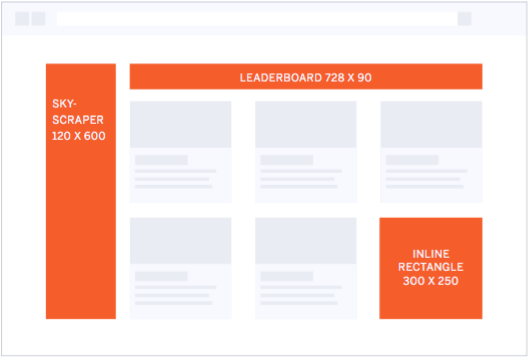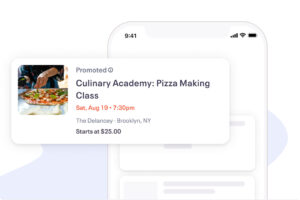To get the word out about your event, you’ll have to reach attendees where they spend most of their time — online. That means advertising your event on websites, mobile apps, and more.
Online advertising is similar to traditional advertising in a lot of ways. Banner ads on websites closely resemble the classic newspaper ad, and the commercials before YouTube videos look a lot like the ones you’ve seen on TV. These ads, commonly referred to as “display ads,” just happen to live online.
Unlike older forms of advertising, display advertising is typically more accessible and affordable — but you still need to be smart about the way you use your marketing dollars. Before you spend a penny, you’ll need a game plan. Here are three steps to setting up successful display ads:
Step 1: Targeting your most valuable attendees
It’s a crowded internet out there, so how can you be sure your display ad is being shown to the people most likely to attend your event? Simple: target your display ads.
- Target specific websites by URL. If you already know which websites your potential attendees visit, then you know where to put your ads. If you don’t know, try to find out by sending out a survey.
- Target websites and apps with keywords. Your ads will display on websites with content relevant to those keywords.
- Target people based on their location. If your attendees are likely to come from a couple specific areas, this might be one of the most useful methods for you.
- Target people based on demographics. Choose the gender, age range, and parental status of people who will be shown your ad — regardless of which website or app they’re using.
The real power of these methods comes from combining them, and you should experiment to see what works best for you. Be careful not to target so precisely that you miss out on broadening your reach, though. Here are a few powerful combinations to try:

Once you’ve set your target, it’s time to craft an ad that gets noticed.
Step 2: Crafting your display ad
Display ads come in all shapes, sizes, and formats. We recommend starting off with static image ads. They’re less expensive to create than rich media or video ads, which means you can test a wide variety of options without a significant investment. Here are a few things to keep in mind to ensure your ad packs a punch:
1. Size matters
Google AdWord’s Display Network, one of the most popular display advertising platforms, has up to 15 different image ad sizes to choose from. Instead of trying to create one of each, focus on the three most common sizes for your ads:

These ad specifications are measured in pixels
2. Make it actionable
A call to action is important in any ad, but they’re even more important in display advertising. Make sure you’re giving people a reason to click. A clear call to action ( “Learn More,” “Sign Up Now”) is essential to driving results.
3. Be sure it stands out
Your ad will be competing with a lot of other content, so make sure your ad grabs the attendee’s attention. Strike a balance between imagery and text. If your ad is cluttered and complex, the message will be lost. Use bold fonts and striking images to make your ad stand out.
Step 3: Measure, test, refine
Once you’ve published a couple of targeted, engaging ads, you need find out if they worked. Three metrics to look out for are impressions, clicks, and conversions.

Analytics tools will not only break down different metrics; they’ll also break down those metrics between different websites on which your ad is displayed, the different versions of your ad, or the different keywords or demographics you targeted. You can weed out the sites and versions that aren’t working as well, and improve your strategy based on what does.
The success of your event depends in large part on how many people know about your event. Follow these steps to using online advertising to spread the word, and you’ll have a recipe for success.
To learn more about how to craft quality display ads and track their results, download “The Event Organizer’s Guide to Online Marketing and Advertising.”





